How to make a belt cutting machine from a washing machine motor
Nothing lasts forever in our world. Sooner or later, a washing machine that has served you faithfully for a long time becomes unusable, and it becomes economically unfeasible to repair it. In this situation, all you have to do is purchase a new housekeeper and send the old one to the scrap heap.
But if you like to do things yourself, before you send your old equipment for recycling, remove the engine from it, which can be used in many useful projects. This article describes the process of creating a cutting tape machine based on available tools. It is proposed to use a washing machine motor as a drive motor.
The content of the article
What materials and tools will be required
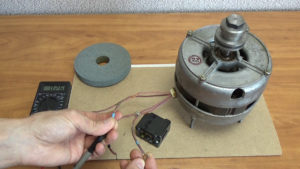 Proper preparation is the key to the success of any event. If you do not have sufficient experience and skills in creating homemade machines, then it would be optimal to purchase a non-working band cutting machine and restore it using your existing engine.
Proper preparation is the key to the success of any event. If you do not have sufficient experience and skills in creating homemade machines, then it would be optimal to purchase a non-working band cutting machine and restore it using your existing engine.
Creating a new device from scratch will require you to have skills in using a welding machine to make a base, as well as knowledge and experience in woodworking. An accurate, rigid frame and backlash-free transmission of motion from the engine to the cutting blade are the main factors that determine the quality of the finished product.
For those who are not afraid of difficulties, below is a list of tools and materials for creating a cutting device yourself.
You will need the following materials and components:
- washing machine motor;
- speed control device;
- profile metal products;
- plywood;
- bearings;
- axles;
- fastening elements (bolts, nuts, screws, self-tapping screws);
- glue.
The tools you will need are;
- welding inverter;
- wood milling machine;
- jigsaw;
- screwdriver;
- a vice and a set of metalwork tools (keys, pliers, etc.).
Step-by-step process of creating a machine
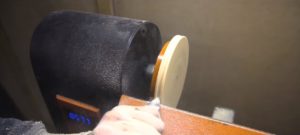 The manufacture of the machine should begin with the most critical and technically difficult part to manufacture - the pulleys for transmitting motion from the engine to the blade.
The manufacture of the machine should begin with the most critical and technically difficult part to manufacture - the pulleys for transmitting motion from the engine to the blade.
Essentially, these are two wheels with a diameter of about 30 cm - one of which is the driving one, fixed in the lower part of the machine and connected through a belt drive to the engine. At the top there is an adjustment wheel that provides tension on the web.
The most common material for making drive wheels among home craftsmen is plywood. It is accessible, easy to process, and less susceptible to deformation than solid wood.
ADVICE! IT IS VERY DIFFICULT TO PURCHASE PLYWOOD OF THE REQUIRED THICKNESS FOR MANUFACTURING DRIVE WHEELS. SO JUST GLUE SEVERAL LAYERS OF YOUR EXISTING PLYWOOD TO SET THE REQUIRED THICKNESS.
The manufacturing process for drive wheels is as follows:
- using a jigsaw, cut a sheet of plywood into square pieces;
- on a milling machine, give them a round shape;
- glue the required number of blanks to give the wheels the required thickness;
- For strength, while the glue is still wet, tighten the glued layers with self-tapping screws.
The wheels in the machine must rotate on axles with bearings.The car pump axles from the VAZ 2108 are perfect for these purposes. We drill out the wheel centers and press the axles with bearings into them.
Great, we have two identical wheels - it’s time to make one of them the leading one. As mentioned earlier, one of the wheels will receive torque from the drive motor through a belt drive. A pulley must be placed on the drive wheel axis.
We also make the pulley from plywood and attach it to the drive wheel with glue and self-tapping screws. In addition to its main function, the pulley also serves as an additional retainer of the bearing from axial displacement. On the other side of the wheel, to prevent displacement, a plywood pad should be placed.
The wheels are almost ready, just some final work remains to be done. To do this, we securely fix the wheel axle in a vice and, using a belt drive, connect it to the motor from the washing machine. We got an improvised lathe, with its help we create the necessary profile of the wheel and pulley while simultaneously removing the axial runout. As a final touch, polyurethane glue should be applied to the working surface of the wheels to create a durable coating that prevents the cutting blade from slipping during operation.
Having finished making the wheels, we move on to the frame of the machine. The frame should be as strong and rigid as possible. It is most rational to make a welded frame from profile pipes in a workshop. The engine mount must be provided at the bottom of the frame.
ATTENTION! WHEN USING A BELT DRIVE TO TRANSFER TORQUE FROM THE ENGINE TO THE DRIVE WHEEL, BE SURE TO PROVIDE A DRIVE BELT TENSIONER DEVICE DURING OPERATION.
When mounting the engine, an adjusting screw should be provided to ensure engine displacement and belt tension during operation. By providing a tension unit on the engine, the drive wheel axle can be firmly secured to the bottom of the frame.
In the upper part of the frame, space should be provided to accommodate the driven wheel and the adjustment unit. The adjustment unit is designed to tension the cutting blade and center it.
Having installed the top wheel in place, we can say that the machine is almost ready. All that remains is to install the cutting blade and connect the engine to the network via the speed controller.
Finally, you need to install limiting rollers for the tape, build a protective casing, a work surface for the table, and paint your creation.
ATTENTION! THE CUTTING BAND, EXCEPT FOR A SMALL WORKING PART, MUST BE CLOSED WITH A COVER!
Testing the device
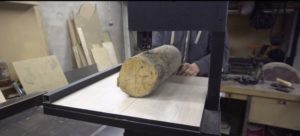 The machine is ready, you can do a test run. For the first time, turn on the machine at minimum speed and do not stand in the plane of the blade. After turning it on and making sure that everything works as it should, you can test the machine in operation. You should start with thin workpieces, gradually increasing the load. Do not forget to use protective equipment when working.
The machine is ready, you can do a test run. For the first time, turn on the machine at minimum speed and do not stand in the plane of the blade. After turning it on and making sure that everything works as it should, you can test the machine in operation. You should start with thin workpieces, gradually increasing the load. Do not forget to use protective equipment when working.
We hope that this article was useful to you and you will be able to bring all your ideas to life.
Do our washing machines have several kilowatts of power? Why write all sorts of nonsense?
The article is blatantly copied from YouTube, Madman channel. I didn’t find a link to the original source in the text, so here it is: https://youtu.be/21a9g7qAkwI Here is a video of assembly and operation.
The dude does amazing things, I've been following him for a long time.

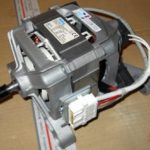


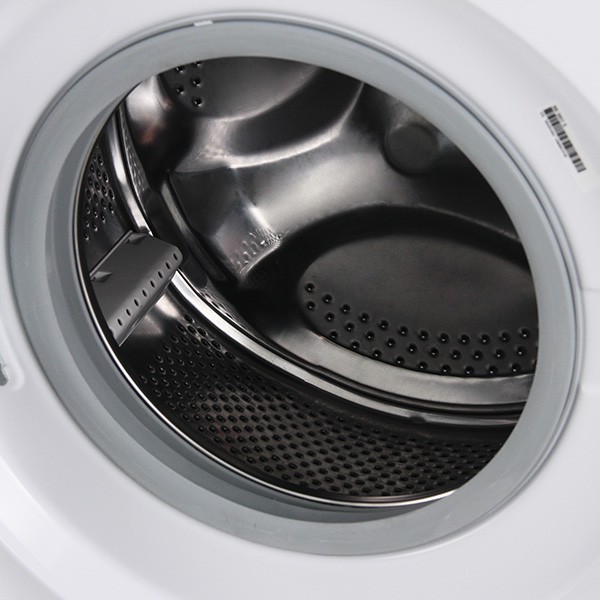

how everything is done here simply in words
where are the photographs or at least drawings of the manufacturing process?
“the machine is ready, all that’s left to do is check”, oga